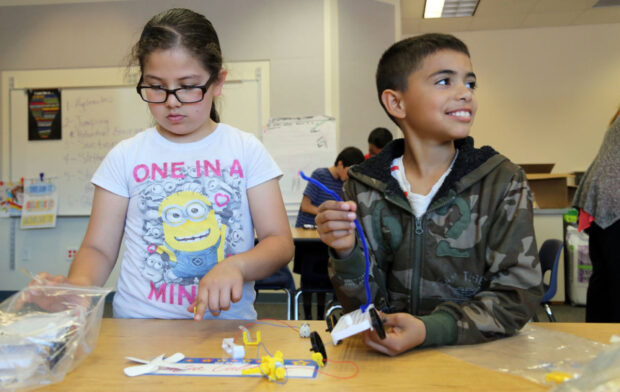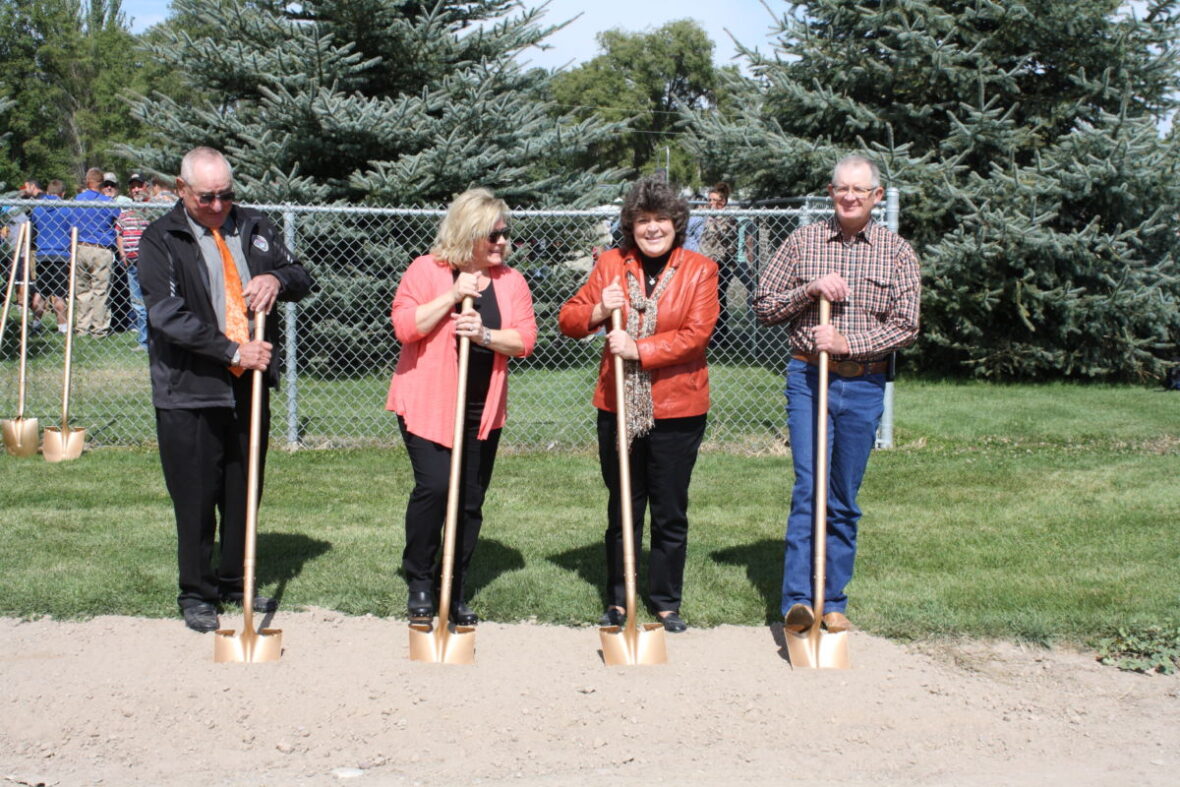First-grader Alexander Borrera and his family will soon leave American Falls and move back to Mexico for the seventh time in his life.
New teachers. New friends. The same struggle to adjust.
“I don’t really like it very much (in Mexico) because it doesn’t snow there,” said the seven-year-old boy.
But Alexander will return to East Idaho’s Hillcrest Elementary next year: a half of a school year in Mexico, a half a school year here as his parents migrate back and forth for work.
Idaho educators have long adapted to the comings and goings of migrant children — but the landscape is changing. More migrant families are making Idaho their home because of job opportunities beyond seasonal farm work and educational programs for children. The challenge now is accommodating the growing Hispanic population, especially in East Idaho.

“There’s more opportunity in the United States,” said Xochil Perez, a recent graduate of Snake River High School who has received two job offers to translate for doctors at Boise hospitals. “You get all the help you can to succeed here, and that’s not always the case where my family comes from in Mexico.”
Migrant numbers decline amid Hispanic growth
Alexander is one of about 4,600 Hispanic migrants enrolled in Idaho’s K-12 schools, a population that has declined by almost 20 percent in the past five years. Some East Idaho school districts are seeing reductions as high as 44 percent.
Meanwhile, Hispanics represent the state’s fastest growing demographic.
Due in part to changes in agriculture, more Hispanics are able to make Idaho their home by finding work in other industries.
It’s good news for the kids, who enjoy a more uninterrupted learning experience. But East Idaho districts must adapt to the growth. As a result, educators are developing all-Spanish classes and putting bonds on ballots in the hopes of boosting funds for new or expanded facilities.
“Our job is to make the transition as smooth as possible for the migrant students, but also to help Hispanic students as much as we can,” said Hillcrest Elementary Spanish liaison Jocelyn Lopez.
Roughly 200,000 Hispanics accounted for 13 percent of Idaho’s population in 2014 — a 12 percent increase over the last three years, while the non-Hispanic minority population grew by just 3 percent. The number of Hispanic students across the state has also increased by 12 percent, to 50,977 kids who attend school year-round.
Meanwhile, the state’s migrant population has declined since 2011 — from 5,757 to 4,625 in 2015. The sharpest declines are happening in East Idaho.
Runoff from the Teton Mountains in Western Wyoming, hot summer days, cool nights and rich volcanic soils make East Idaho a prime place for growing potatoes — a practice that has long attracted thousands of Hispanic migrants to the area.
But East Idaho school districts have experienced a 34 percent drop in migrant enrollment since 2011, with the ones that typically serve the most migrants experiencing the highest rates of decline.
“It really isn’t what it used to be,” said Aberdeen School District migrant liaison Teresa Torres.
Aberdeen serves about 750 students and is located 35 miles northwest of Pocatello. Predominantly agricultural, the district consistently ranks among the highest in the state in terms of migrant enrollment.
In 2011, 226 migrants attended Aberdeen’s schools. Last year, that number fell to 118 — still the most of any East Idaho district but 48 percent lower than it was four years earlier. Yet nearly 60 percent of Aberdeen’s student body is Hispanic, and the district continues to grow.
In May, 67 percent of Aberdeen voters approved a bond for a new high school, which will open up classroom space for the district’s predominantly Hispanic student body, said principal Travis Pincock.
“Teachers are having a hard time getting up and down the isles in our classrooms,” he said.

Mechanization of farming contributes to migrant enrollment declines
Fifteen miles south of Aberdeen, the American Falls School District is fighting a similar battle — with less luck.
The agricultural town of 4,314 has experienced consistent growth since 2013, though the number of migrant students in district has fallen from 132 to 73 over the past five years.
It’s the district’s elementary school that is severely overcrowded.
Between 500 and 520 kindergarten through third-graders attended Hillcrest Elementary in 2015-16, eclipsing American Falls High School’s enrollment by more than 120. The district is made up of 52 percent Hispanic students.
According to Superintendent Ronald Bollinger, the surge of growth is the result of the first wave of Hispanic children born to an increasing number of settling migrant families over the past decade.
“We used to see a lot more migrant workers during harvest,” said Bollinger. “They’d come and go, but larger corporate farms have created an environment in which those who come here to work end up staying.”
More migrants are sticking around because they are being replaced by the modern equipment that comes with corporate farming, said Sarah San Juan, a director for the Community Council of Idaho, a federally-funded nonprofit that helps Hispanics and migrants find opportunities in education, housing, health and employment.
She pointed to advancements in irrigation and weed control.

Watering an East Idaho potato field once required hundreds of sprinkler pipes, which migrant workers typically moved. Now, large pivots water that same ground and require nearly no human assistance. Likewise, chemicals have replaced weeding typically done by migrants.
“In the 1960s and 70s, you’d literally see hundreds of Hispanics weeding fields,” said San Juan. “Now you hardly see any.”
Such advancements in farm technology have lead to greater job diversity among settling Hispanics in American Falls.
“I think that many of their parents just realize that they can get other jobs, ones that don’t require them to move around so much,” Lopez said.
Hispanics are finding work in several industries outside of agriculture, including construction, entertainment, recreation, accommodation and food service industries.
But the bottom-up growth resulting from the influx of Hispanics in American Falls presents a challenge for administrators: accommodating the young learners.
Teachers converted a Hillcrest Elementary hallway into a computer lab last year in an effort to free up class space for third graders. But the tables and chairs lining the hall violated the city’s fire code. Administrators were asked to clear the space by the end of the school year.
In May, American Falls administrators sought a $12.5 million bond for an intermediate school to help relieve overcrowding at Hillcrest. Sixty-three percent of American Falls patrons favored the bond — not enough for the two-thirds supermajority needed to pass in Idaho.
“Over half our students speak Spanish as a first language,” Bollinger said, “so we need that space to keep our classes small in order to teach those students more effectively. That’s getting very hard to do here.”
A focus on career readiness
Some East Idaho districts are offering college courses that will help native Spanish speakers develop skills necessary to compete for jobs in a variety of industries.
American Falls and Snake River school districts are now offering dual-enrollment communications classes designed to help Hispanic students utilize their bilingualism in healthcare and a variety of other industries. Aberdeen is also considering offering such courses.
Idaho State University Spanish professor Cathleen Tarp recently received a five-year, $1.2 million grant to bring the courses to rural East Idaho schools with high Hispanic enrollment numbers. Students don’t have to be Hispanic to take the courses, though the majority who do are native Spanish speakers.
Enrollees get the opportunity to earn up to 22 college credits and certification to work as a translator in a variety of public and professional settings.
“The program helps students utilize their bilingualism — something not a whole lot of people have,” Tarp said. “It helps them see that their ability to speak Spanish is something that can actually make them more employable.”
